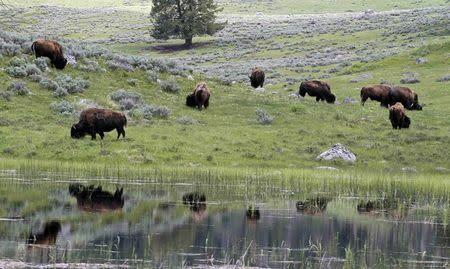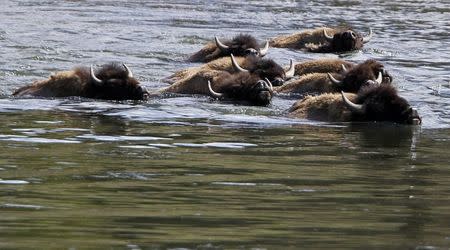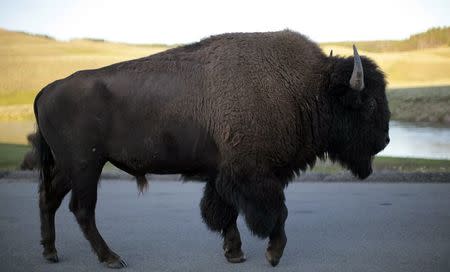Conservation groups ask Obama administration to protect Yellowstone bison
By Laura Zuckerman (Reuters) - Two conservation groups asked the Obama administration on Thursday to provide Endangered Species Act protections for about 4,900 bison at Yellowstone National Park, where managers intend to cull the herd by 900 this winter. Buffalo Field Campaign and Western Watersheds Project said in a petition to the U.S. Fish and Wildlife Service that buffalo at the park that spans parts of Wyoming, Montana and Idaho made up part of the only free-roaming band in the country to retain its genetic integrity. That compares to herds of bison elsewhere in the United States that contain domestic cattle genes and the 139 bison that originated at Yellowstone that on were placed on Thursday 13,000 acres owned by an Indian tribe in northeastern Montana. "The wild bison living in and around Yellowstone are the only bison in America to continuously occupy their native habitat since the days when tens of millions migrated freely across the continent. A listing under the Endangered Species Act is necessary to ensure the survival of this iconic species,” said Dan Brister of Buffalo Field Campaign. Federal and state agencies that manage the park’s buffalo said earlier this year that some 900 head must be killed through hunting or slaughter this winter. The push to cull bison that seasonally migrate from the high elevations and deep snows of Yellowstone in a search for food at lower elevations in Montana will bring the population closer to a target of 3,000 to 3,500 buffalo, government managers said. The huge, hump-backed animals are a top attraction for the 3 million annual visitors to Yellowstone, but those that wander from the park raise fears among ranchers they will spread the bacterial disease brucellosis to cattle. About half of Yellowstone’s bison have been exposed to the disease, likely brought to the park by cattle that once grazed there. The ailment can cause cows to miscarry and jeopardize Montana’s brucellosis-free status allowing shipment of livestock across state lines without expensive testing. The Fish and Wildlife Service did not immediately respond to a request for comment on Thursday. The 139 bison originally from Yellowstone that arrived on Thursday at the Fort Peck Indian Reservation had been part of a successful government experiment that quarantined them to produce a band free of brucellosis. (Reporting by Laura Zuckerman in Salmon, Idaho; Editing by Dan Whitcomb and Peter Cooney)




